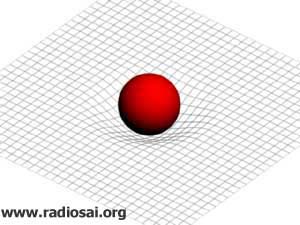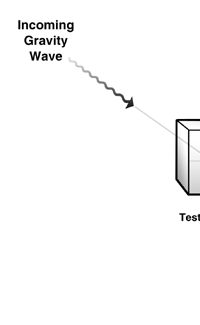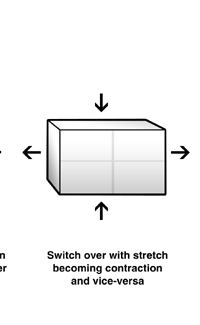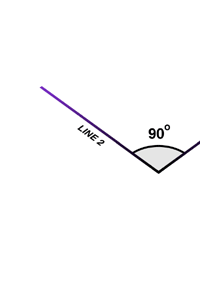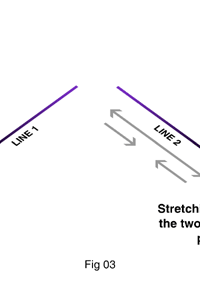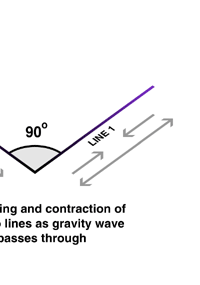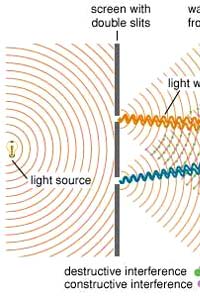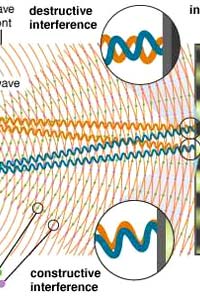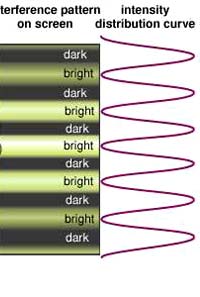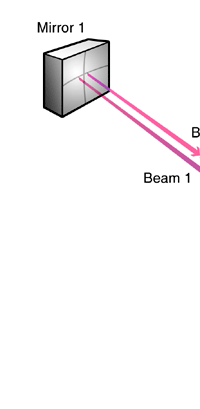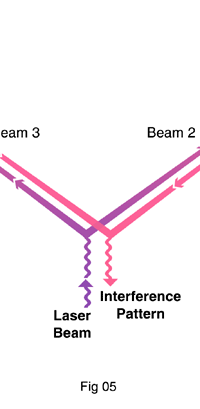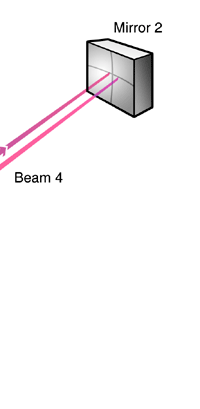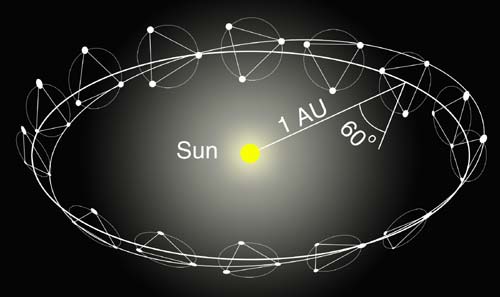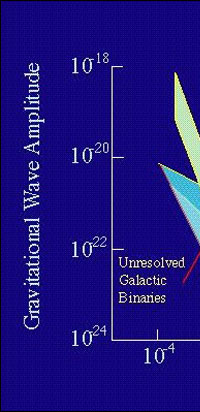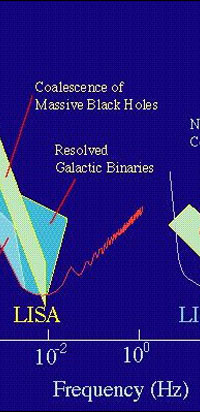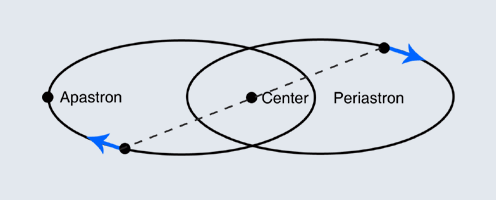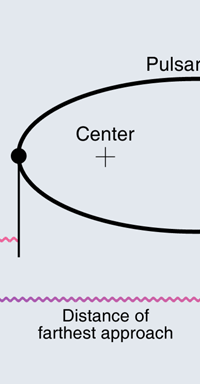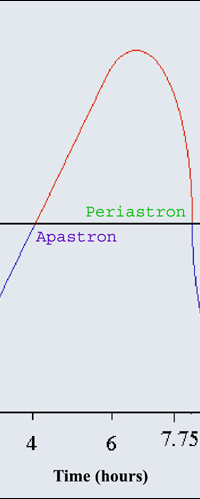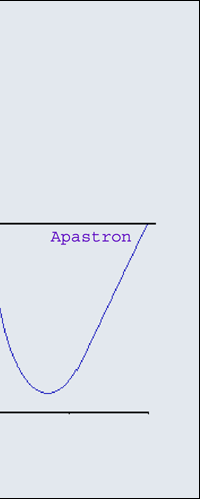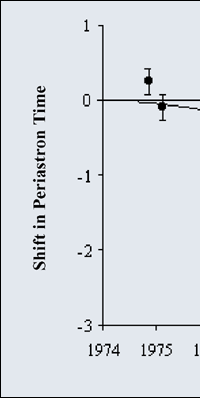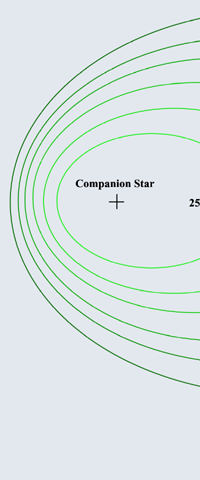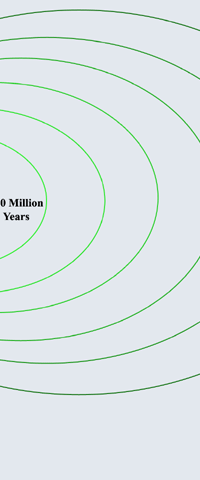 |
 |
 |
Volume
6 - Issue 07
JULY - 2008 |
IN QUEST OF INFINITY – 17 By Prof. G. Venkataraman
Loving Sai Ram and greetings from Prashanti Nilayam. We are almost at the end our tour of the Cosmos, but that does NOT mean we have come to the end our quest. We still have a long, long way to go; more about that later but meanwhile, we do have to address an important question which is: “We have discussed lately, two models for the beginning of the Universe, one based on the by-now-standard Inflation Model, and another which is more a well developed idea rather than a model at present – I am of course referring to the Ekpyrotic Model of Steinhardt and Turok, with which we have been preoccupied in the last few issues of H2H. As I told you, it would be some time before the mathematics of the Ekpyrotic Model are explored in full detail; right now that appears to be too tough a problem and must await future analysis. But meanwhile, one can ask: “Leave aside all that fancy theoretical stuff. Is there any way hard core experimentalists can give a verdict? They have done this many times in the history of Physics. Can they pull it off one more time, and if so, what does it take?” Well, that is exactly the issue I shall be dealing with this time. As it turns out, God is quite fair! If the task ahead is very difficult for theoretical physicists, it is even more formidable where experimentalists are concerned. That story next! Going Back in Time at the Speed of Light Basically we want to know what happened a long, long time ago, almost at the time of the birth of Universe. Now how does one look back in time? We do not have a Time Machine to travel back and forth in Time as H.G. Wells had in one of his famous novels. But there is one clever trick that astronomers have been using for a long time and I have already told you about it. Basically, they say, “Listen, we all know that fast as it is, light does take a certain amount of time to travel; its speed is not infinite; therefore, if we pick up light that left its source say a million years ago, then we can get a glimpse of what happened a million years ago. This is the simplest way of going back in Time and reconstructing the past history of the Universe.” This is a very important point and we seldom appreciate it. I mean if right now I look at the Sun – not directly of course! – then the sunlight that would be hitting my eyes would actually have left the Sun about eight minutes ago; that is the time it takes for light to travel from the Sun to the Earth. You get the idea, I presume. In this way, if we have very powerful telescopes and are able to pick up light that is very faint – and this is being done all the time – then we can say we are peeping far back in time. The question now becomes: “How far back in time can one go in this manner? Is there any limit or can one go in this manner all the way back to the instant when the Universe was born?” It turns out that there IS a definite answer which is that at best, we can go back to say about 200,000 or 300,000 years after birth. We CANNOT use this trick for times prior to that. Why? The answer is connected with the fact that almost all of astronomy is done using some part or the other of the electromagnetic spectrum. To put it more simply, when we use an ordinary telescope, we are using ordinary light as a messenger from the past. Instead of visible light, we can use light of longer wavelengths like infra-red radiation, or microwaves, or even radio waves. Or else, we can use electromagnetic radiation of wavelength shorter than visible light, like ultra violet radiation, x rays, or even gamma rays. Almost 98% of astronomy or perhaps even more, gets done this way. However, electromagnetic astronomy cannot be applied to times prior to about 200,000 years, because the Universe was opaque at that time. That means that electromagnetic messenger waves got absorbed before they travelled far. However, gravity waves of those times could be tapped for information, provided we know how to catch them. Gravitational astronomy has yet to get started because we have not even detected any gravitational wave. In BOX 1, I have explained what exactly is a gravitational wave and therefore I shall not repeat that here. But there are some implications that I shall now point out. How Mass Affects Space and Time Let me first take you back a few issues [to QFI 05] when I discussed some of the implications of Einstein’s Theory of General Relativity and Gravitation. I mentioned then that according to this theory, when space-time becomes curved, it implies the existence of a mass. I realise this is a far from adequate way of describing what the theory actually says, but for our purposes, I think it is OK to say when we talk about an object with a certain mass m say, it means that space in the neighbourhood of the object is actually warped. Thus we can either talk in terms of masses [as we normally do] or in terms of local curvatures of space-time [when we use Einstein’s theory]. Take first a good look at the figure below.
The above figure tells us if there is a mass, m say, then space-time in its neighbourhood gets warped. Suppose the mass m is moved; what happens to the curvature in space-time that I just mentioned? What happens is similar to what happens when we take a paddle and stir up water in a lake. The effect of the stir would propagate as a disturbance on the surface of the water and reach other spots. Suppose we have a piece of cork on the water surface some distance away. When the disturbance reaches the cork, it would start going up and down, indicating to us that it is experiencing the passage of the wave in its neighbourhood. The same thing happens when a mass is moved in space-time. It generates a gravitational wave that moves at the speed of light. And when this wave encounters another mass [that I shall call the test mass], it would disturb the curvature of space-time associated with the test mass. In practical terms, the test mass would experience a distortion in its shape. In particular, in one direction perpendicular to the direction of the wave it would get squeezed, while simultaneously experiencing an elongation in the perpendicular direction. A little later, the squeeze would be replaced by elongation while the elongation would be replaced by a squeeze. In other words, there would periodic distortions of the shape of the test mass, the frequency being that of the gravitational wave. See Figure 2. By the way, these frequencies are generally quite low, ranging from about 1000 cycles/sec to as low as 10-4 cycles/sec.
Searching for the Elusive Gravity Wave What it all boils down to is that if we want to detect a gravitational wave, we should be able to detect low frequency distortions of say a large metallic object, say a cylinder. The problem is that the distortions are extremely small. How small? Well, about the size of an atomic nucleus! That’s tough, and that is why gravitational waves have not been detected thus far. This does not mean no one has tried. It has been, and a bit of that story is narrated in BOX 1. Alright, so no one has detected a gravitational wave, but is there any evidence for it, even if say a bit indirect? There sure is and a pretty spectacular one too, one that in fact fetched two people the Nobel Prize! That story is told in BOX 2. What we learn from these two boxes is that 1) terrestrial detection of gravity waves is a tough job, 2) that said, there is clear [indirect] evidence that gravity waves do exist, and technology having made vast leaps, there is a lot of incentive to kick start gravitational astronomy. The proponents of gravitational astronomy argue, “Currently, the gravitational-wave ‘sky’ is entirely unexplored. Since many prospective gravitational wave sources have no corresponding electromagnetic signature (e.g., black hole interactions), there are good reasons to believe that the gravitational-wave sky will be substantially different from the electromagnetic one. Mapping the gravitational-wave sky will provide an understanding of the Universe in a way that electromagnetic observations cannot. As a new field of astrophysics, it is quite likely that gravitational wave observations will uncover new classes of sources not anticipated in our current thinking.” Since detecting gravity waves is a tough job, gravitational astronomy does not come cheap; so the supporters have had to compete hard to get some funding, and finally, a start has been made. Many projects have been planned and are currently in various stages of implementation; understandably, the biggest of them is in America, It is called LIGO, standing for Laser Interferometric Gravitational Observatory, and the principle involved can be understood by consulting Fig. 3 below. The basic idea is this; Imagine drawing two long straight lines on the surface of the earth, lines that are exactly perpendicular to each other, and intersect at a point. Suppose a gravity wave passes through that region. If you recall an earlier remark that the passage of gravity waves essentially makes space-time itself to go into oscillation, then it is easy to understand that the space-time associated with these two lines would contract and stretch as in the Fig. 3. What Joseph Weber tried to do [BOX 1] was to have a large aluminium bar and see how it responded to the warps in space-time [recall Fig.2]. The new idea was to get rid of the bar altogether and use space-time itself.
Now you may ask: “OK, gravity waves make the space along the two lines oscillate as the result of the contraction and expansion they produce. So what? No one can see space; so what’s the use?” Ah, that’s where human ingenuity comes into the picture. You see for about three hundred years at least, people have learnt to inter-compare distances using light beams. The way this works is explained in Fig. 4.
Gravitational astronomers said: “We will split a laser beam into two beams, make one go along one path and the other one along the other. At the end of the paths, we would put mirrors, so that the two beams get reflected and return to the starting point. There, we would try to see whether they arrive at the same time or at different times. How? Via interference fringes. The idea is illustrated in Fig. 5
The problem is that even when there is no gravity wave, the fringe system would wobble due to all sorts of terrestrial disturbances. Riding on top of all these would be the space-time quakes, and the problem is to detect these. Researchers said, “We think we can do it, and so give us the money!” The campaigners have succeeded and managed to get some money to do some proof of concept experiments. Two LIGO labs have been established and they are located at Hanford, Washington and Livingston, Louisiana. The work of these labs would involve two phases, an initial phase and an advanced phase. Two Massive Labs to Detect the Waves LIGO Hanford Observatory (LHO), located on the U.S. Department of Energy Hanford site in eastern Washington, comprises 5 major experimental halls for the interferometer spread over 5 miles. 1.2 m diameter ultrahigh vacuum tubing connects these halls. Three support buildings house laboratories, offices, and an amphitheater, and two additional buildings are associated with maintenance and operations. Approximately 90,000 square feet of this space is under tight environmental control to minimize contamination of sensitive equipment. The physical plant has been designed to provide a low vibration environment similar to the surrounding undeveloped shrub-steppe environment. LHO houses two interferometers with arm lengths of 4 km and 2 km. The 4 km equipment is installed in vacuum chambers in the corner station and the two end stations on each arm. The 2 km equipment uses vacuum chambers in the corner station and the two mid-stations situated halfway down each arm. The two interferometers share 2 km of beam tube along each arm. The beam tube can eventually accommodate up to 5 interferometer beams and the current station buildings can accommodate up to 3 interferometers to accommodate future growth.
The LIGO Livingston Observatory, located in pine forests between Baton Rouge and New Orleans, Louisiana, is the site of a single 4 km laser interferometer gravitational wave detector. Construction of its physical facilities, scaled to accommodate one interferometer, is complete. The beam tube dimensions are identical to those at LHO. I must now make a few remarks to indicate how tough these experiments are. Gravity waves being weak, the wobbles that one is looking for in the interference pattern would also be very tiny. Hence, one must take all the precaution one can to keep confusing signals to a rock bottom, and that is where most of the money gets spent. This is called achieving a high signal-to-noise ratio, and boy does achieving a high ratio swallow money?! Where do these disturbing signals come from? From many sources; if the light path is in air, then the air molecules can cause problems, and so one has to have a vacuum tube all along the light path, as you can see in the photo above. The laser beam can fluctuate and that could mean problems. Small seismic disturbances can disturb the reflecting mirrors which mean more problems, which is why these labs are located in remote places to the extent possible. The instruments that are being installed to get going are called Initial LIGO, to be soon followed by what is called Advanced LIGO, which would enhance detection sensitivity by more than a factor of 10 over the entire initial range of frequencies that LIGO would operate in. Just to give you an idea of what that means, what Initial LIGO would be able to achieve during one whole year would get done by the advanced machine in a few hours. I should add that though the LIGO labs are located in America, the US has opened the door for international collaboration, via what is called LIGO Scientific Collaboration [LSC]. LSC includes scientists from India, Russia, Germany, U.K., Japan and Australia. The international partners are involved in all aspects of the LIGO research program. Initial LIGO would start operations in 2009. By 2011, installation of Advanced LIGO would commence even while the Initial LIGO would slowly be decommissioned. Outer Space Makes for Better Experimental Conditions OK, so what must one do to make gravity wave detection even more sensitive. The first and the most obvious thing to do is to increase the length of the arm of the interferometer. But then, due to the curvature of the earth, we cannot go too far in that direction. If we want to increase the length, then there is only way to do it, go into space! And that has given birth to the idea called Laser Interferometer Space Antenna, known better as LISA. In a sense, LISA is like LIGO, with two interferometric arms. However, the arms are out in space. Here's how it works: A laser beam from one of the spacecraft is pointed toward a detector on another spacecraft, 5 million kilometers away. The laser beam precisely measures a distance between the two spacecraft. When the distance changes, an interference pattern is formed, and LISA has detected a gravitational wave. The three arms of the spacecraft work together to confirm each other's observations, as well as to get more detailed information about the passing waveform. LISA can measure a change in length approximately 1000 times smaller than the diameter of an atom (or about 30 times the size of the nucleus of an atom!). To measure the very small strains expected for gravitational waves, the distance between spacecraft must be very large - about 5 million km. This is approximately 13 times the distance between the earth and the moon. This observatory will be very sensitive!
The two detectors (LIGO and LISA) complement each other because they cover different frequency ranges. (See illustration below.) Ground-based detectors cannot see very low frequencies because the ground moves too much (remember - these detectors can see motions that are smaller than the size of atoms). A space-based detector that is free from the motion of the earth is the only way to see low frequencies. According to the current concept, the three identical LISA spacecraft will be launched together on a single Atlas V launcher. They will then independently reach their final orbits around the Sun using their propulsion modules that will be jettisoned prior to starting the scientific operations. The three spacecraft will be located at the vertices of a triangle, with an arm’s length of 5 million kilometres. The orbits will be similar to that of the Earth, but will trail our planet by approximately 50 million kilometres. It will take one year for the three spacecraft to reach their final position and to start the actual mission. The LISA triangle will face the Sun, at an angle of 60 degrees to the plane of Earth's orbit, revolving with Earth around the Sun. These heliocentric orbits for the three spacecraft were chosen so that the triangular formation is maintained throughout the year, with the triangle appearing to rotate about the centre of the formation once per year. The relative movement of the three spacecraft will help to detect the direction of each source and to reveal the nature of the gravitational waves. The distance between the spacecraft determines the frequency range in which LISA can make observations; it has been carefully chosen to allow observation of most of the interesting sources of gravitational radiation, namely massive black holes and binary stars.
This figure to which I referred earlier, shows the frequency ranges in which LIGO and LISA operate. As you can see, the frequency bands are very different, and the kind of phenomena that can be studied are also different. In short, the two machines would complement each other. Right now, LISA is a concept, and one must see if it would get the funding required to get built and launched! Even it is, I do not know if it can help in getting answers related to the early Universe. However, it would teach us how to do advanced gravitational astronomy, and that in due course, would lead on to more sensitive and sophisticated astronomy – that is the way astronomy has always marched forward. OK, it is clear we must use gravitational astronomy if we are to get answers to some tough questions relating to the very early history of our Universe, particularly regarding the question whether there was inflation as many say there was, or whether our Universe was born according to the script given by the Ekpyrotic Model. The big question now is: “Will gravitational astronomy ever reach that stage as to give us some definitive answers?” My response is: “If the question is whether technology can ever rise to that level and whether humans can ever rise to that level of excellence, the answer if a clear yes. However, there is a big IF!” The Big ‘Ifs’ of Funding IF? Why is that? Well, it all depends upon where humanity would be in say fifty years from now. In my lifetime, I have seen between the fifties and the nineties, progress no one, and I mean no one could have forecast way back in 1955, for instance. Technology reached amazing heights, and thanks to it, impossible feats got done. But since then, we have also been getting very strong signals that those sunny days could become dreams of the past. It all boils down to a few basic issues which include the following:
A few comments now on all these issues combined. In the period from the fifties to the nineties, funds for basic research simply flowed, thanks to the huge support received by the scientific community in America. In this sense, America set the pace and others followed. In those days, there were not many competing priorities for the simple reason that in fields like biology, for example, there were no mega projects like one saw in Physics. But soon, there came projects like the Human Genome Project which demanded substantial funding. Meanwhile many social problems began to become acute, and politicians in America who once tried to outdo each other in the matter of voting for funds for basic research, now began to have second thoughts – after all, they had to survive and for that, the vote bank was important. Just to illustrate the point, I might mention that in the eighties, physicists in America dreamed up a huge accelerator project called the Superconducting Super Collider [SSC for short]. It was to be the world’s biggest accelerator, and thanks to the huge campaign [in which the political angle was duly played up, meaning how America could not afford to be second to Europe], funds were voted not only for doing various preliminary studies but for actually going ahead with the project. The giant machine was due to come up in Texas, and the machine as conceived was MUCH bigger than the machine now getting ready to operate in Geneva. Construction work actually started but then came the issue of competing priorities. Many in the US felt, “What is the big idea of spending billions of dollars for finding out something that might be very exciting for a few hundred physicists may be when we desperately need dollars for providing healthcare benefits for the poor?" I still remember seeing in 1990 on America TV [when I was briefly in that country on some work] an old man appearing and saying with a long drawl, “I don’t know what these scientists want to spend so much on finding out something which nobody can understand, when there is no money to take care of old people like me? Will somebody explain to me why our tax dollars should be spent to make these scientists happy, abandoning at the same time old folks like me?” I suppose you get the idea. By the way, while social activists were waging their campaign, there was a lot of sniping from within the scientific community itself, including from within the Physics community! I know how many solid state physicists were bitter about the way funds were cut from their programs for diversion to high energy physics. That should give some idea of competing priorities. These days, there are additional items on the list of priorities, like the so-called war on terror, etc. There is more to this. The kind of projects I described would require launches of many satellites into space. About seventy percent at least of this funding has to come from America, which means NASA [National Aeronautic and Space Administration] must get the funding for it; Europe, Russia, and Japan might pitch in with the balance, perhaps. But right now, the NASA budget is very tight, and within that organisation, there are many competing priorities. There are some who want more of human exploration of the Moon followed by a Mars landing by humans. Then there are all kinds of satellite experiments that astronomers want flown. Then are people who want money for more development on the technology side. Among this fairly large group of competitors, would be the group that wants satellites for gravitational astronomy. If you ask me, based on various current problems facing humanity, I doubt very much if the kind of astronomy that is called for to decide issues relating to inflation vs. Ekpyrotic model does stands much chance of getting funding for a long time. So maybe, we would not know the answer via experiments. However, there is a chance that good computer models might emerge, whose predictions could be tested via other experimental methods that are less costly. That said, direct confirmation by observing gravitational signatures would take a long, long time. That’s all for this issue and next time we are going to take a sharp turn. Where would that take us? Join me again next month to find out!
|
|||||||||||||||||||||||||||||||||||||||||||||||||||||||||||||||||||||||||||||||||||||||||||||||||||||||||||||||||||||||||||||
Vol 6 Issue 07 - JULY 2008
|
Best viewed in Internet Explorer - 1024 x 768 resolution. |


